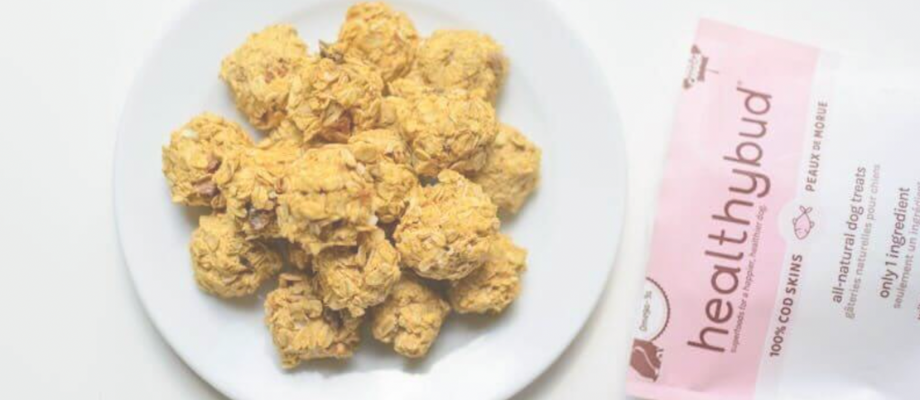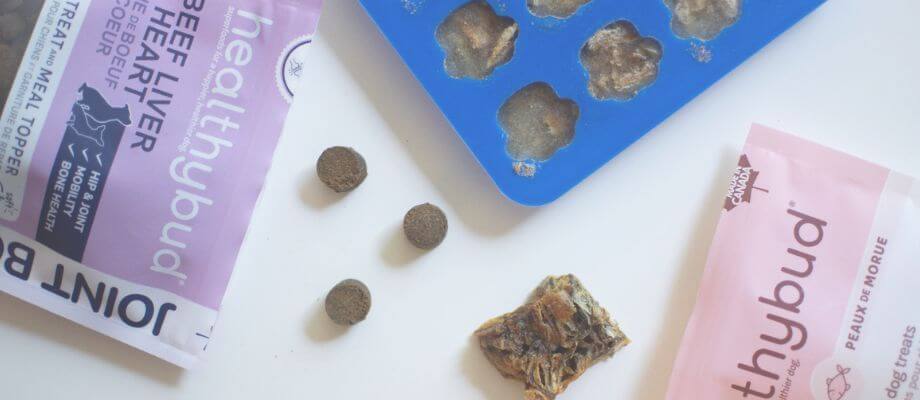Table of Contents
Tips to Choose the Right Training Treats for Your Dog’s Needs 🎲
Training your dog is more than just teaching them commands; it’s about building a bond, reinforcing good behavior, and keeping them mentally stimulated. And what’s the secret ingredient to this magical connection? Treats! But picking the right treat isn't as simple as grabbing the first bag you see. To truly level up your training sessions and keep your dog engaged, it’s essential to find the best training treats for your dog's unique needs. Let’s dive into the key factors you need to consider when selecting dog training treats that your furry friend will love, while also ensuring successful and productive training sessions.
Summary 🌈
Choosing the right training treats for your dog is key to successful dog training! This blog explores the importance of size, flavor, contrast, variety, and even your dog’s dietary needs when selecting training treats. Learn how to maximize your dog’s motivation and performance during training while balancing their nutritional requirements. We’ll also cover quick delivery tips, the role of scents, and advice on managing allergies and intolerances by seeking input from your vet. Make every training session more engaging and productive with these handy tips.
Mini Training Treat Variety Pack

$61.00 USD
Get all 3 flavours in our Mini Training Treat Variety Pack! With Beef, Chicken & Wild-Caught Salmon protein options, these 1-calorie superfood treats are perfect for training smarter and faster. Packed with Lion's Mane, Reishi, and Salmon Oil, they help boost… read more
Key Takeaways🏆
Small, soft treats speed up training sessions.
Changing treat flavors and textures keeps dogs engaged.
Always consider your dog’s dietary needs, and consult your vet about potential allergies or intolerances.
Color contrast and strong scents help dogs stay focused, especially in distracting environments.
High-value treats should be reserved for challenging training situations or environments.
The Magic of Treats in Dog Training 💫
We all know treats make dogs happy, especially when they do something great. But there’s more to treat selection than simply picking your dog’s flavor of the day. Different dogs respond to different types of rewards, and factors like behavior, frequency, and even contrast come into play. Below, we dive into the world of dog training treats, uncovering how the right selection can elevate your training game and have your furry friend's tail wagging with joy.
🐾 Yummy Rewards: Quick, Consistent, and Effective
Picture this: Your dog nails a command, and in comes the treat like a high-five for their good work.
A quick tip: make that treat delivery swift and smooth. Pairing the dog training treat with praise right after the desired behavior helps your dog connect the dots faster than a game of fetch. Remember, consistency is your secret weapon.
Start by treating your dog every time they respond to a command, especially when they’re first learning a new skill. Over time, you can gradually reduce the treats as they master the behavior. This transition from frequent to occasional rewards helps your dog maintain their good habits while learning to rely less on treats.
⭐️ Size Matters: Keep It Small and Soft
Want to speed up your training sessions? Go for small, soft treats. They act like bite-sized rewards that don’t interrupt your pup’s learning flow. Large or hard treats take longer to chew, which can slow down your training momentum. When training, you want your dog to focus on the task, not the treat.
A small tip: If you’re concerned about calorie intake, break larger treats into smaller pieces. Training sessions often involve frequent rewards, so using smaller portions helps keep your dog’s diet balanced while still providing enough motivation.
DYK? The Healthybud Mini Training Treats for your dog are perfect for this purpose — small, healthy at 1 calorie each, and perfect for keeping your dog engaged without overloading on calories!
🌈 Contrast: Make the Treat Stand Out
Imagine treats as spotlights — the easier they are to see, the faster your dog connects the behavior to the reward. This visual contrast can be surprisingly effective, especially during outdoor training or in low-light situations.
If your hand is the treat dispenser, choose a treat that contrasts with your skin tone. Light skin? Go for a dark treat like Healthybud Beef Lung. Dark skin? Opt for a light-colored treat like Healthybud Banana Chips. The same principle applies if you’re placing treats on the floor — use bright-colored treats on dark floors and darker treats on light surfaces. Making the treat visually pop helps your dog spot the reward faster, leading to smoother training sessions.
Banana Chips

$12.00 USD
🍌 The low-cal, vegetarian treat 💛 Healthybud's best-selling banana chips are an all-natural, low-calorie treat for dogs of all stages and sizes. Coated with coconut oil to give an extra crunchy texture, these vegetarian chips are packed with potassium with… read more
🍖 Mix It Up: Variety Keeps Dogs Engaged
Just like humans, dogs can get bored with the same treats over time. To keep training sessions fresh and exciting, try rotating between different treat flavors and textures. This not only prevents your dog from losing interest, but it also taps into their natural curiosity.
Imagine having a treasure trove of treats — Healthybud Beef Lung one day, Banana Chips the next. By mixing things up, you’re adding an element of surprise that keeps your furry friend guessing and eager to perform. Plus, variety keeps the reward value high, meaning your dog will stay motivated throughout each training session.
Beef Lung Wafers

$12.00 USD
The high-reward, protein-packed treat for picky eaters These lightweight wafers are great as a high-reward training treat and are easy to break into small pieces! Gently baked for the perfect texture High in protein, iron & essential nutrients Helps strengthens muscles… read more
🐶 Super Sniffs: Let the Nose Lead the Way
Dogs’ sense of smell is incredible, and it plays a huge role in their motivation. When choosing training treats for your dog, opt for those with a strong aroma that will capture your dog’s attention. Soft, meaty treats tend to have more potent scents, making them irresistible for most dogs.
If you’re training in a distracting environment (like a busy park or during a playdate), a strongly scented treat can help keep your dog focused. The Healthybud Beef Joint Booster, for example, packs a punch in the scent department, ensuring your dog stays on task, even when there’s a lot going on around them.
🧩 Special Treats for Special Tricks: Long-Lasting Chews
Sometimes, certain behaviors or tasks require more time and focus from your dog, like learning how to stay calm during grooming or practicing extended periods of “down” and “stay.” In these situations, a longer-lasting, chewy treat can be more appropriate.
For example, Healthybud Sweet Potato Chews are excellent for tasks that require your dog to stay focused and relaxed. These chews work as both a reward and a distraction, giving your dog something tasty to enjoy while keeping them busy for longer periods.
🐾 Allergies and Intolerances: Know What to Avoid
While treats are a great way to reward your dog, it’s important to make sure the treats you choose won’t upset their tummy or trigger any allergic reactions. Just like humans, dogs can have food allergies and intolerances, so always be mindful of the ingredients in their treats.
Common allergens include beef, fish, chicken, dairy, wheat, and corn. If your dog has any known allergies, opt for single-ingredient treats or those made with hypoallergenic ingredients. Healthybud offers a range of treats made from single, limited, but always all-natural ingredients, which can be easier on sensitive stomachs.
💡 Always Consult Your Vet
If you’re ever in doubt about which training treats to give your dog, consulting your vet is always a smart first move. Your family veterinarian can help you choose treats that align with your dog’s specific dietary needs, especially if they have health issues like weight management, sensitive digestion, or allergies.
Your vet might even have recommendations for treats that complement your dog’s regular food, ensuring that they get all the necessary nutrients while staying motivated during training. It’s always better to be safe, especially when it comes to your dog’s health.
🍽 Balance and Moderation: Treats Shouldn’t Replace Meals
While training treats for your dog are a fantastic tool, it’s important to remember that they should only be a small part of your dog’s diet. Overfeeding treats can lead to weight gain or nutritional imbalances.
One way to maintain a healthy balance is to incorporate lower-calorie treats or break larger treats into smaller portions. You can also adjust your dog’s meal portions on training days to account for the extra calories from treats. The Healthybud Freeze-Dried Bites are a great option because they can double as part of a meal, helping you maintain portion control without overfeeding.
🧐 FAQs
- How many treats should I use during a training session?
It depends on the length of the session and the complexity of the training. For quick, frequent rewards, smaller treats are ideal to avoid overfeeding. The key is balance — keep the treats small and adjust your dog’s regular food intake accordingly. - What if my dog has allergies?
If your dog has known allergies, opt for treats made from limited ingredients and avoid common allergens like dairy, wheat, or corn. Healthybud has options that are gentle on sensitive stomachs. - Can I use human food as dog training treats?
Some human foods, like plain chicken or sliced up carrots, can be safe for dogs, but many human foods are toxic. Always check with your vet before using any non-dog-specific food as a treat.
Expert Advice 🐾
Stephanie Rombough, a certified force-free dog trainer, emphasizes the importance of selecting the right treat for your dog’s training needs. “What is a high value dog treat? It’s something that your dog absolutely loves and will work very hard to get!” says Stephanie. “Each dog is different, but for most dogs these will be higher protein options. Think about it: if you held out both a piece of apple and a piece of chicken, which do you think your dog would go for? Likely the chicken!” Choosing the right high-value treat not only keeps your dog motivated but also makes training sessions more productive and enjoyable.
Conclusion 💎
Choosing the right training treats for your dog’s needs can elevate your training sessions and enhance the bond between you and your furry companion. By considering factors like size, flavor, scent, and variety, you can keep your dog engaged and motivated. Don’t forget to factor in any dietary restrictions or allergies, and always consult your vet if you’re unsure.
Whether you’re teaching basic commands or working on more complex behaviors, the right treat can make all the difference. And remember, training is a journey — so take things one treat at a time!
🚨 Special Promo Alert!
Enjoy a 15% discount on Healthybud Mini Training Treats! Use code BLOG15 at checkout and start enriching your dog’s training sessions today.
Author Bio:

With a community of millions of dog lovers on social media, Brian realized that a lot of people wanted to know how Magnus is so incredibly well trained so he created a FREE dog training community to help people train their own dogs at home.








